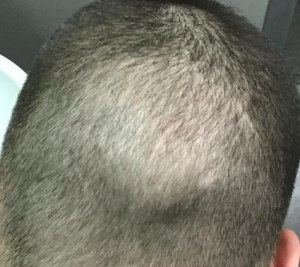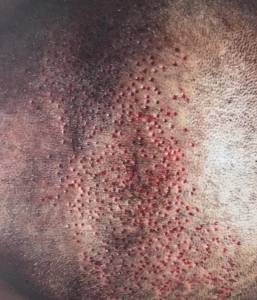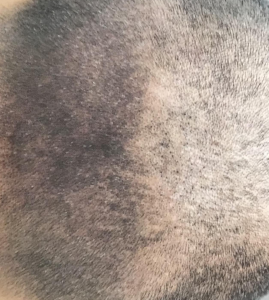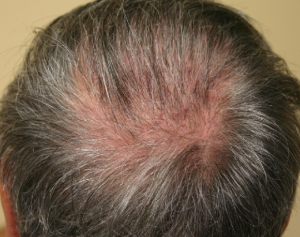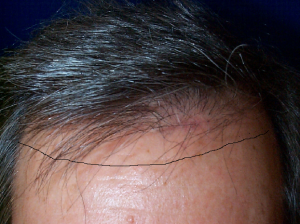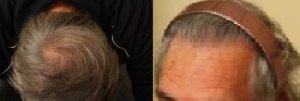Doctors, I’m confused as to what Haircheck is and how it’s different from the miniaturization mapping. Can I get some more info please?
I’m going to try to clarify the usefulness of this tool as best I can. I saw a patient (we’ll call him John) that came to see me after I started him on Propecia a year ago. At the time I prescribed Propecia, I noticed he had miniaturization to 50% in the top of his head. I measured this when I used the video microscope, but there was no see-through appearance as his hair had a good weight to it so with the naked eye and I did not see miniaturization, nevertheless, the hair looked normal but with the microscope. It was clear that he had early balding when measured by the HAIRCHECK instrument. The HAIRCHECK instrument measures hair bulk and puts an actual number to it. From a visual appearance, there was no sign of balding on John (just like a year ago). The main reason for taking the test at the office on this visit (as with the last one) was that John saw hair on the pillow case indicating that he was losing hair. The HAIRCHECK device confirmed his concern that he was losing hair.
The measurement of hair in the mid-head (between the ears) at, 17 cm just above the glabella (just above the nose), was measured for hair bulk and compared with hair from the donor area, just above the occipital notch, in the back of the head. The measurements of the hair on the back of his head should reflect his normal hair bulk. If the area between the ears had the same bulk as the back of his head, I would tell him he did not need Propecia and was not balding. But last year we saw a reduction in hair bulk determined with the HAIRCHECK instrument in the top of his head indicating that he was balding. One year ago, John has a measurement showing that he had lost 45% of the hair on the top of his head. On today’s visit John had a bulk measurement of the hair at the exact same location (in the middle of his head) and a bulk measurement indicated that on this visit, John had a hair loss now of 55% of the hair on the top of his hea (between the ears), a clear sign of more hair loss and a progressive process.
When he comes back in a year, if his number may drop further because hair loss is progressive. Fortunately, many men stop their hair loss with the drug finasteride (Propecia). Let’s assume that in 1 year it drops to 35% of the bulk, and in three years it drops to 25% of his hair bulk when compared with the back of his head. If this becomes his case, then the idea of the Master Plan that I have been pushing for many years is just what should he needs, as this plan will define a path for him to take. At some point, his hair loss will become obvious to him. My job is to follow the progression of his hair loss and build a plan for him on what to do. There are many options, but I will not write a book on it for this blog post.
I hope that this blog post gets the message across that everyone needs a Master Plan for his hair loss and it must be with a good doctor, one that can be trusted to always act in the best interests of the patients.



